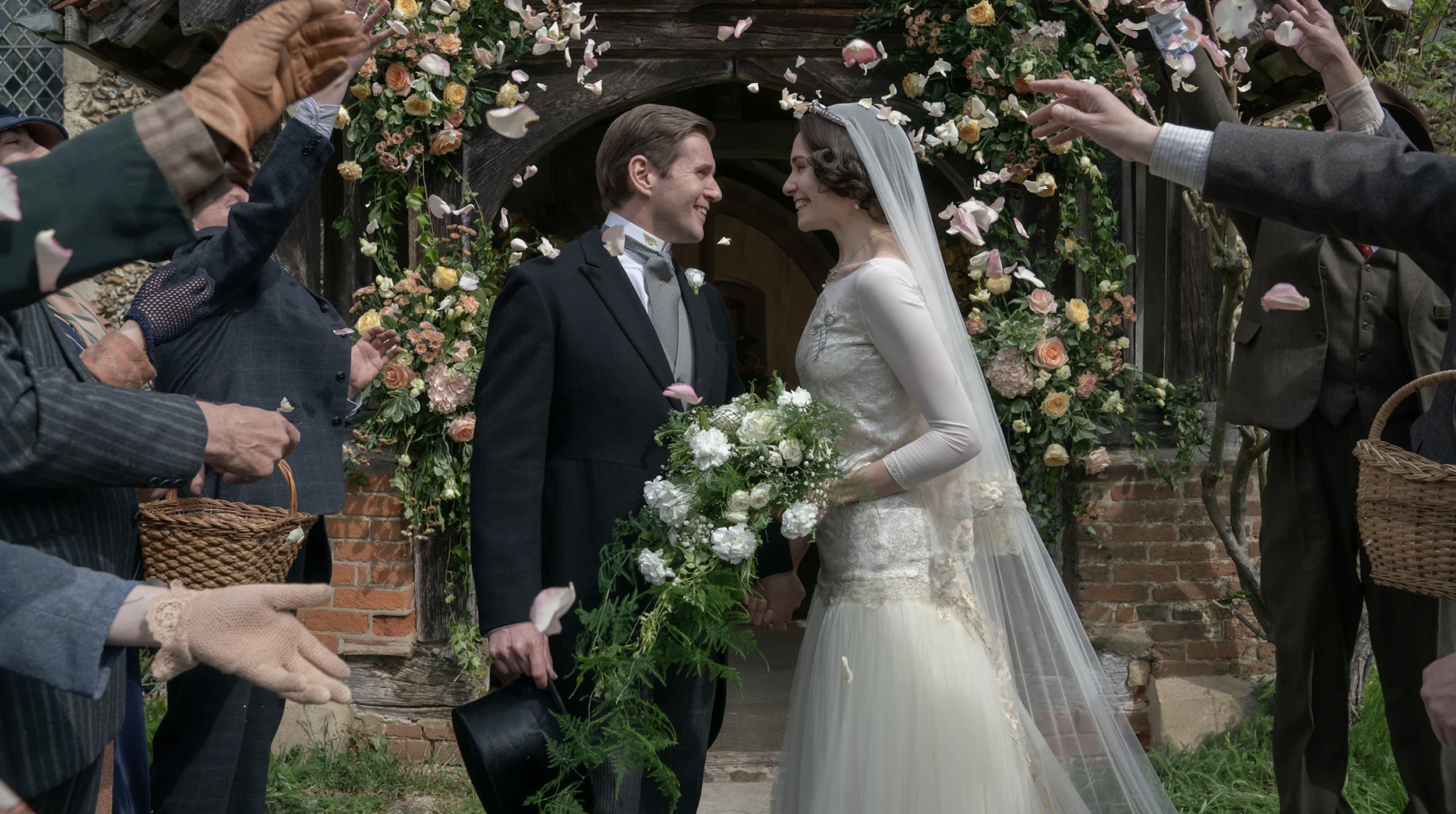Downton Abbey: A New Era
It has been twelve years since Julian Fellowes’ historic Downton Abbey first graced the small screen. Since a commercially successful transition to the “Kinema” (as Hugh Bonneville’s Robert Crawley might call it) in 2019, the tale of the ever-expanding Crawley family (and staff) seems ready to draw to a close, tying off loose ends in homage to its ever-faithful fans.
A tale of two cities, Downton Abbey: A New Era splits the sprawling cast to follow two distinct stories. Downton is long overdue for roof restoration without the financing to do so. Luckily, a rescue package arrives in the form of director Jack Barber, finding the old Abbey the perfect set for his new silent film. With generous compensation for the intrusion of this voluminous film crew, matriarch and matriarch to be Ladies Violet (Maggie Smith) and Mary (Michelle Dockery) reluctantly agree to host. Disgusted at the thought of mingling with such people, Robert sweeps the other half of family and staff across the Channel to the French Riviera, where an old flame of the dowager countess has gifted her a villa on his passing. Hoping to avoid his widow contesting the rights of inheriting this exorbitant gift, they accept the invitation of the mysterious aristocrat’s son to visit the Villa. As health scares, relationship scares and family-legitimacy scares abound both groups, the family must continue to learn to adapt to ever changing times to ensure their legacy and security of the estate.
Had I seen any Downton prior to watching A New Era? No. Have I seen the first big-screen iteration from 2019? Also no. Does that make me wildly unqualified to review this movie? Probably, and yet here we are. Even the completely uninitiated can enjoy the aristocratic pageantry of early century England. Unrelenting attention to set design and costume fully immerses us once again in the world of the Crawleys. There is the razor sharp wit of the Dowager Countess that never runs awry, or Mr Carson’s (Jim Carter) sheer indignation at the French summertime sensibilities. All of these classic Downton elements and character interplay are sure to be celebrated most by the die hard Downton fans that can truly appreciate the nuance and inside references.
There remains difficulty in transitioning such a bloated character pool that one typically finds in long running TV and compressing them into a two hour film. The choice to split the family in two certainly helps to give room for some individual character arcs to breathe. For others, attempts to resolve long-standing conflicts have all the subtlety of a sledgehammer, whether that be Edith (Laura Carmichael) vocalizing a desire to get back into journalism or Mary casually explaining away her husband’s illogical absence just to allow chemistry with the charming film director. These devices play well when allowed to develop over a season or two, but fall flat on the silver screen. Nonetheless, those waiting over a decade now for some closure for their favorite characters are likely to appreciate it. There also remains the difficulty of celebrating the classist aristocracy of early 1900s England, which only seems to become more problematic in today’s shifting media landscape.
Overall, Downton Abbey: A New Era is made as fan service to those still craving the glory days of the pinnacle of British period drama, bringing us new stories and concluding old ones.


